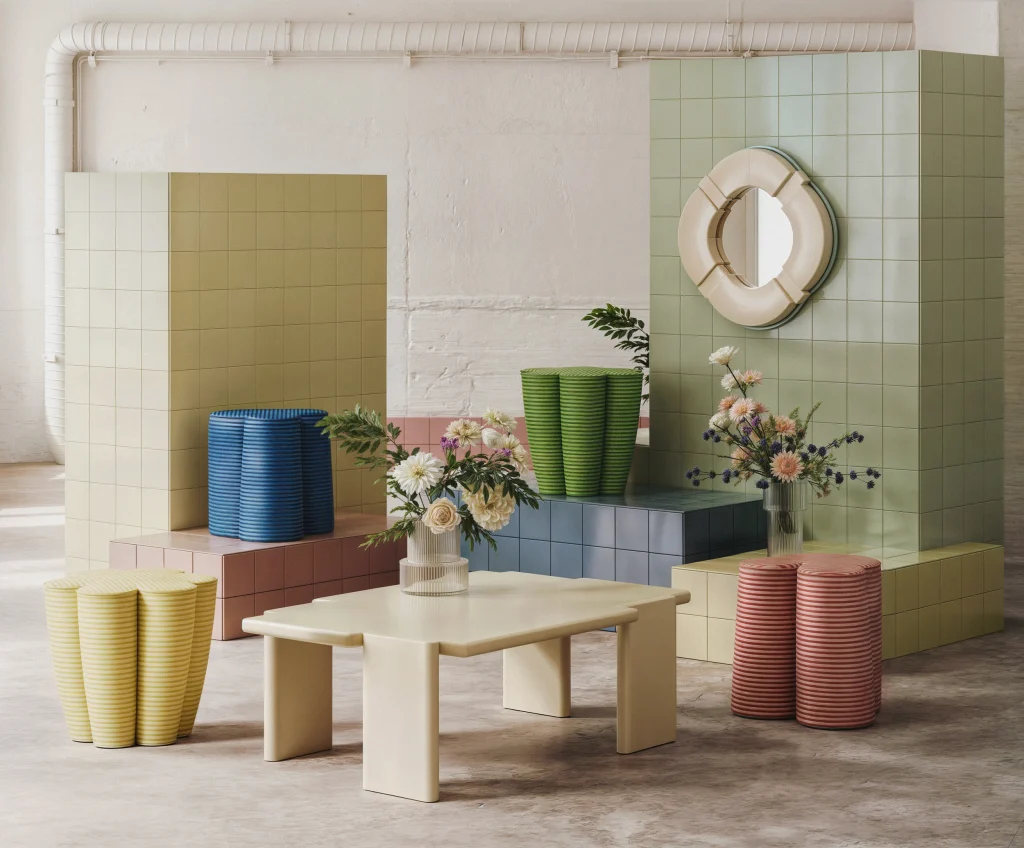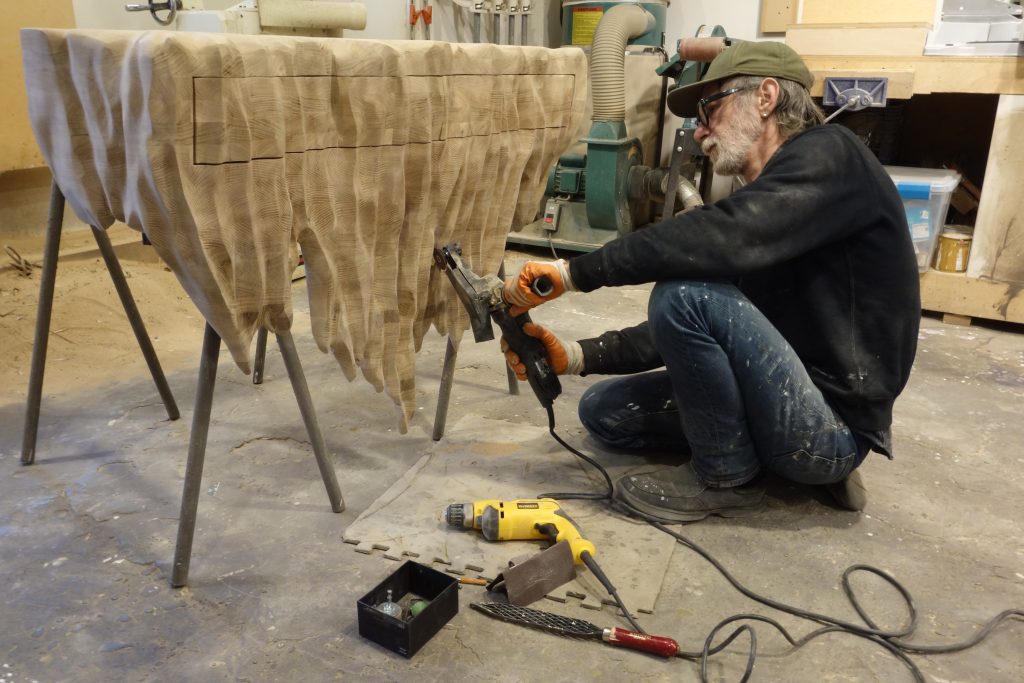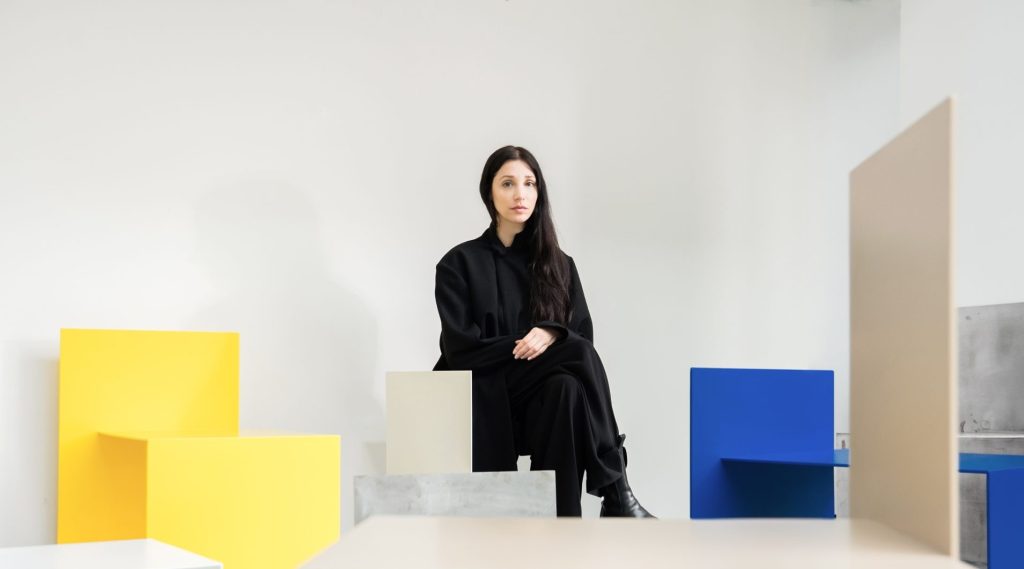
Eero Moss: An Experimental Design Journey from Transylvania
Letting the material speak for itself, the Transylvanian design studio, Eero Moss, brings to life objects that harmoniously synthesise wood, historical styles and artisanal skill. Founded by Tiberiu Cojocaru in 2018, the studio is based in the heart of Transylvania and takes advantage of Romania’s vast forests, centring around the beauty of nature’s wonders. Combined with Tiberiu’s daring approach to design, the current collections – Erosio and Brut 18 – embody the studio’s unusual journey and ambitious philosophy: experimentation and embracing the unknown. “It’s a tale of following my artistic instincts, pushing boundaries, and embracing the freedom to create in my own unique way,” the designer emphasizes.
View all works by Eero Moss, including EM101 Walnut Hand Carved Coffee Table>


Looking at the creations of Tiberiu, one would be surprised to know that his background in woodworking stems from his education in boat building. This unique experience served as the first introduction to wood for the designer and ultimately, sparked a passion that fed into the inception of Eero Moss. “After I finished the course, I came back to my hometown in Transylvania and bought my first walnut tree. It was already milled, and low-risk as I could already see the ‘paintings’ of each slab, which were mesmerising,” Tiberiu recalls.










Viewing each slab of wood as an artwork in itself is an approach evident throughout the designer’s oeuvre. Taking the EM110 Sculptural Cocktail Coffee Table, from the Erosio collection, as an example, Tiberiu lets the material qualities of the walnut top dictate the sculptural qualities of the piece. The base is sealed with several coats of oil and hand buffed to obtain a specific sheen on the charcoal black surface to make the walnut stand out. This aligns with the Erosio collection’s underlying mission: an ode to the fluid, organic shapes found in the natural world.
“The main focus of the Erosio collection was to incorporate sleek and natural design elements influenced by the way water moulds materials in its environment,” Tiberiu explains. “This is evident in the tabletops, which were designed to mimic the river stones I was using as a child for water skipping.”






On the other side, the studio’s Brut 18 collection focuses on the texture and the characteristics of the Brutalism movement, which has always served as a great source of inspiration to Tiberiu. “[Brutalism] is like a rebellious response to the opulent designs that seem to dominate the furniture scene nowadays,” the studio’s founder elaborates. “I see it as this counterbalance, this raw and unfiltered approach that challenges the mass-made furniture industry.” This sentiment pervades the Brut 18 collection – and Eero Moss’ design ethos at large – as each piece embodies a certain rawness and simplicity that is timeless yet daring.






With the extensive Erosio and Brut 18 collections, Eero Moss tells the story of applying experimental and fearless craftsmanship to transform one of nature’s finest materials, wood. Tiberiu views these series of works as chapters in his creative life, and whilst he forges his inspiration in embracing the unknown, his design journey opens up a window into a bright future full of more objects imbued with signature style.
BIO
Tiberiu Cojocaru is a Romanian designer, born in 1989, with a passion for slow living, design, and crafts. Tiberiu’s love of natural materials and the geological processes that shape them is at the heart of his design process. He finds inspiration in the textures and patterns created by erosion, which contributes to his approach to creating unique objects. He employs a range of materials and techniques to assemble his works, imbuing each one with a distinctive character that reflects his passion and creativity.






